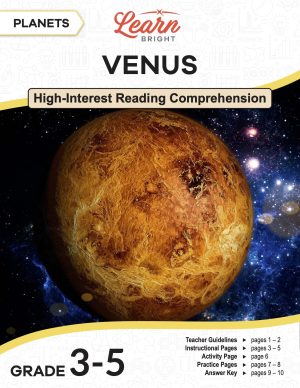Description
What our Gandhi lesson plan includes
Lesson Objectives and Overview: Gandhi introduces students to the influential philosophy of peace and justice that Gandhi upheld. At the end of the lesson, students will be able to identify Gandhi, list significant contributions, and explain his influence on the world. This lesson is for students in 5th grade and 6th grade.
Classroom Procedure
Every lesson plan provides you with a classroom procedure page that outlines a step-by-step guide to follow. You do not have to follow the guide exactly. The guide helps you organize the lesson and details when to hand out worksheets. It also lists information in the orange box that you might find useful. You will find the lesson objectives, state standards, and number of class sessions the lesson should take to complete in this area. In addition, it describes the supplies you will need as well as what and how you need to prepare beforehand.
Options for Lesson
Included with this lesson is an “Options for Lesson” section that lists a number of suggestions for activities to add to the lesson or substitutions for the ones already in the lesson. For an additional activity, you can assign a different civil rights leader to small groups of students and have them research and present them to the whole class. You can also assign each group a different aspect of Gandhi’s life to research, like his early life, his time in South Africa, and his writings. You could also show a full-length movie about Gandhi’s life, pausing it at different points to discuss. For another additional activity, you could invite a historian to speak to your class about Gandhi. Finally, you can send a letter home to students’ parents asking them to share any experiences they may have with protesting.
Teacher Notes
The teacher notes page includes a paragraph with additional guidelines and things to think about as you begin to plan your lesson. This page also includes lines that you can use to add your own notes as you’re preparing for this lesson.
GANDHI LESSON PLAN CONTENT PAGES
Early Life of Gandhi
The Gandhi lesson plan includes three content pages. The lesson begins by explaining that many people have committed injustices all over the world, in the form of racism, violence, religious persecution, and more. However, other people also fight against those injustices. Mohandas Gandhi, also known as Mahatma Gandhi, was one of the most famous leaders against injustice. Mahatma means “Great Soul” and is a religious title. In India, people call him the “Father of the Nation” or Bapu, which means father.
Gandhi was born in Probandar, India, on October 2, 1869. He came from a wealthy family and got married at 13 in an arranged marriage. At this time, people often got married at a young age.
Gandhi went to London for college to become an attorney. He also studied Indian law, joined the Vegetarian Society, and decided not to eat meat or drink alcohol for his whole life while in college. When he returned to India, he was not able to start his own law practice. Instead, he and his family moved to South Africa so he could work for an Indian law firm.
In South Africa, Gandhi started fighting for civil rights and began his peaceful battles against injustice.
The Fight for Civil Rights Begins
Gandhi arrived in South Africa in April 1893 and saw lots of racial discrimination. They did not allow him to ride in a first-class section of a train because of the color of his skin as an Indian man. This is when he decided to devote his life to fighting injustice.
On the day when he wanted to return to India, the South African government debated whether they should deny Indians the right to vote in elections. Almost no one opposed the law. Gandhi remained in South Africa for the next 20 years.
He began by writing a pamphlet about the discrimination against Indians in South Africa. Great Britain controlled the country at this time and saw his pamphlet (called the “Green Pamphlet”) as anti-government. They thought he wanted to cause trouble.
Gandhi spent the next 20 years participating in peaceful protests against the South African government. They treated he and the other protestors badly, but they refused to use violence. We call this passive resistance and civil disobedience. They beat, jailed, or shot many of his followers. Gandhi thought all people were “Children of God.”
They also arrested Gandhi. He spent his time in prison reading books like Civil Disobedience by Henry David Thoreau, which influenced his decision to commit to peaceful resistance.
Gandhi eventually negotiated with the South African government and got them to recognize Indian marriages and remove taxes that only Indian people had to pay. The country became more tolerant of Indians. Gandhi returned to India.
Return to India
When Gandhi returned to India in 1914, they saw him as a hero. A poet, two years earlier, called him “Mahatma,” a title only given to the holiest men. Gandhi did not like this special treatment because he thought all people were equal.
In 1918, he led the protest against a law that gave Britain lots of power in India. These protests resulted in many deaths and injuries on both sides. Gandhi remained peaceful throughout all of this.
Gandhi then started a movement to break India away from Great Britain and gain its independence. He represented the Indian National Congress and started persuading other people that India should be independent. He published the Declaration of Independence of India in 1930. This document outlined how India would self-rule independent from Great Britain.
That year, Gandhi also led tens of thousands of people in a protest against a law that required India to only purchase salt from Great Britain. Britain had a monopoly and the taxes were high, placing a burden on the poor people in India. For the protest, the people walked peacefully 240 miles to the Arabian Sea. Once there, they broke the law by making their own salt, an act of civil disobedience. They arrested 60,000 people, including Gandhi. We call this the Salt March protest. It was successful and the British overturned the tax.
Gandhi spent the next few years protesting other injustices, like the treatment of the untouchables, or poor people in India. People and the government mistreated them. Gandhi protested this using a hunger strike or fasting, in which he did not eat.
Gandhi also led other types of peaceful protests, like refusal to work, sit-downs in the street, boycotting courts, and more. Having thousands of people participate brought attention to the civil rights issues and helped them gain new freedoms from Great Britain.
The British left India in 1947 and 1948, and established two independent countries: India and Pakistan. Thousands of people died during the celebration of independence because two religious groups (Hindus of India and Muslims of Pakistan) fought.
A man who did not believe Muslims and Hindus should work or live together shot and killed Gandhi on January 30, 1948. This event actually brought the two groups together.
Gandhi’s commitment to nonviolence inspired Martin Luther King Jr. in the U.S. and Nelson Mandela in South Africa, among others. Gandhi changed the lives of many people using prayer, nonviolence, civil disobedience, passive resistance, and meditation.
GANDHI LESSON PLAN WORKSHEETS
The Gandhi lesson plan includes three worksheets: an activity worksheet, a practice worksheet, and a homework assignment. You can refer to the guide on the classroom procedure page to determine when to hand out each worksheet.
GANDHI ACTIVITY WORKSHEET
The activity worksheet asks students to work in groups to read and answer questions about the lesson material.
Students can also work alone for this activity.
MATCHING PRACTICE WORKSHEET
For the practice worksheet, students will first match terms, names, and places to their descriptions. They will then put events in Gandhi’s life in order from 1 to 10.
THE 5 W’S HOMEWORK ASSIGNMENT
The homework assignment asks students to use the 5 W’S and H (who, what, when, where, why, and how) to briefly summarize Gandhi’s life. They will also answer a few additional questions about him.
Worksheet Answer Keys
This lesson plan includes answer keys for the practice worksheet and the homework assignment. If you choose to administer the lesson pages to your students via PDF, you will need to save a new file that omits these pages. Otherwise, you can simply print out the applicable pages and keep these as reference for yourself when grading assignments.









